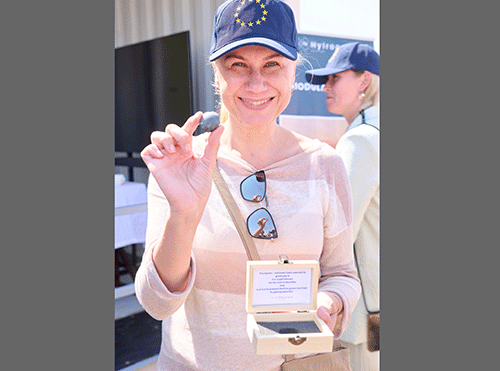In early September, I spent six days in Namibia where I took part of the Africa Green Hydrogen Summit. I discovered a country ripe with opportunity, with active civil society and young people, a dynamic investment climate, and dedicated officials.
Namibians are fully committed to their country’s success, and to pursuing the late President Hage Geingob’s vision, carried forward by its current President Nangolo Mbumba and Vice President Netumbo Nandi-Ndaitwah, of a green industrialised economy powered by a just energy transition where renewable energy and green hydrogen play a pivotal role.
Namibia’s electricity demands currently exceeds what it generates. Despite the challenges of being a net importer, Namibia’s abundant sunshine — more than 300 days a year — presents enormous potential for renewable energy.
Namibia can leapfrog into a green industrialisation centred around renewable energy. The ingredients for success are all there.
During my visit, I met civil society and youth, as well companies and investors developing renewables and green hydrogen projects in Namibia.
I also had constructive meetings with Vice President Nandi-Ndaitwah and the Minister of Mines and Energy Tom Alweendo. These exchanges confirmed the strategic partnership of Namibia and the EU on energy matters and critical raw materials.
The EU has pledged to go carbon neutral by 2050. Our energy transition leans mainly on renewable energies and the safe and secure use of civil nuclear energy. Green hydrogen will play an important part in our future energy mix as it offers a clean power alternative for sectors which are hard to electrify, such as some types of transport and industrial sectors.
Hydrogen can also help us balance our electricity system and inject electricity into the grid when renewable production is not sufficient. This is why we have a Hydrogen Strategy based on producing green hydrogen domestically and importing it.
By 2030, the EU wants to import 10 million tonnes of green hydrogen and we are building partnerships with potential exporter countries like Namibia.
The EU sees Namibia as a reliable partner and is committed to building a strong partnership.
We’re already putting in place strong foundations.
During my visit to Erongo region, I saw great progress with joint Namibian and European private sector green hydrogen projects. Some of these projects hold potential for export, but most of them have a strong focus on domestic consumption.
Cleanergy, for instance, is on track to be Africa’s first solar-powered hydrogen production facility. The hydrogen is then made available at a public refuelling station for instance for hydrogen-fuelled trucks.
Likewise, the HyIron project in Oshivela will use solar energy to produce net-zero emissions green iron. This will contribute to Namibia’s green industrial growth while supplying the growing global demand for greener materials. Holding a green iron pellet in my hand, was a thrilling example of a promising future green industry in Namibia.
Meanwhile, HDF Energy is building a solar electricity plant to supply Namibia’s electricity grid but also produce green hydrogen that can be stored, ensuring power availability even at night or on cloudy days.
The EU’s commitment to Namibia extends beyond boosting the economy and aims to support Namibians in need. TIDRET project for instance provides solar panels to disadvantaged households in informal settlements. It’s just one example of our efforts to help increase electricity access in Namibia. During the summit, I signed three EU and EU Member States-funded programmes to support Namibia’s green industrialisation agenda.
They will leverage infrastructure investments in green hydrogen, support long-term energy planning and grid development, and assist in establishing the necessary legal and governmental framework.
These projects and contributions show what Namibians and Europeans can achieve when they work together. This helps Namibia’s economic development, can create thousands of local jobs and opportunities, and help us to win our common fight against climate change.
I am thankful for Namibia’s warm hospitality and look forward to the next phase of our partnership. Namibia has once again demonstrated that it is the country of the brave in leading the green industrialisation agenda in Africa.
*Kadri Simson is the European Union’s commissioner for energy.


